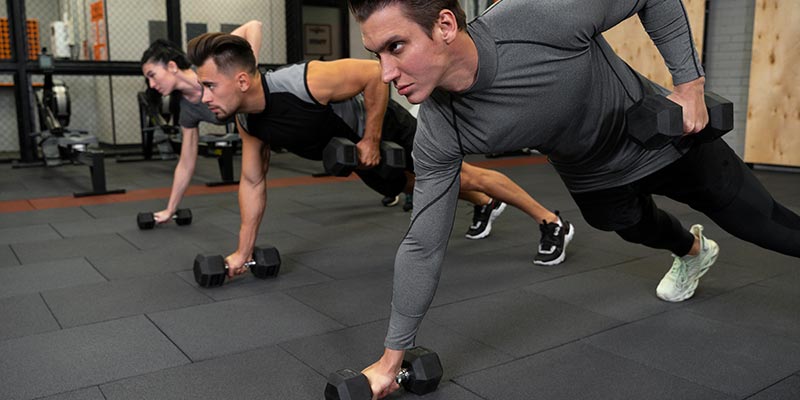Functional fitness exercises are the secret weapon for making your everyday movements easier, safer, and more efficient. From lifting groceries to climbing stairs, these exercises train your body for real-life activities, not just the gym. Explore why adding functional fitness to your routine is essential and how it can transform your workouts and your life.
What Is Functional Fitness?
Functional fitness focuses on exercises that train your body to perform everyday movements efficiently and safely. Unlike traditional workouts that isolate individual muscles, functional exercises engage multiple muscle groups simultaneously, improving coordination, strength, and balance.
Think of movements like squats, lunges, pushing, pulling, or twisting. These movements all mimic the actions you perform daily, from bending to tie your shoes to lifting a grocery bag. By practicing these movements in a controlled setting, you strengthen your body and increase its adaptability to real-life demands.
Key Benefits of Functional Fitness
Functional fitness offers aesthetic improvements and helps your body function more effectively in daily life. It also offers better balance and stability through exercises that strengthen core muscles, reducing your risk of falls.
Additionally, training multiple muscle groups simultaneously teaches your body safe movement patterns, which can further prevent injuries. Functional fitness exercises also enhance posture and core strength by engaging your entire body, helping you stand tall and move with greater efficiency and ease.
Engaging in functional movements can enhance mobility and independence at any stage of life. It can be especially helpful for seniors who should aim for at least half an hour of cardiovascular exercise daily and engage in strength training at least twice per week. Building this type of routine makes it easier to enjoy life with less risk of injury.
The real power of functional fitness lies in how it translates to your daily routine. When you strengthen the movements you use regularly, you make everyday tasks easier and safer to perform. Imagine carrying a heavy laundry basket without straining your back or climbing stairs without fatigue.
Functional training also boosts agility, energy, and confidence, allowing you to move through your day with less effort and greater comfort. In essence, your workouts become practical tools that enhance your overall quality of life, not just your gym performance.
Top Functional Fitness Exercises and How to Add Them in Your Routine
Adding functional exercises to your routine can be simple. Here are some effective moves that train multiple muscle groups and mimic real-life actions:
- Squats: Strengthen your legs and core, making sitting and standing easier.
- Lunges: Improve balance and coordination while engaging your glutes and quads.
- Planks: Build core stability that supports every movement.
- Kettlebell swings: Train your hips, back, and shoulders for lifting and bending.
- Push-ups: Strengthen the upper body and core, helping with pushing or lifting objects.
- Deadlifts: Reinforce the muscles used for safely picking up heavy objects off the floor.
Functional exercises can complement any workout style, whether you focus on building strength, improving cardio, or enhancing mobility. Incorporate two to three functional movements in each session. Mix them into warm-ups or circuit routines to make workouts more dynamic.
Start with manageable weights and progress gradually, adding resistance or increasing repetitions as you become stronger. Even a few minutes of functional training a day can improve your posture, balance, and overall movement quality, making the benefits noticeable in your daily life.
Common Mistakes and How to Avoid Them
To get the most out of functional fitness, avoid these pitfalls:
- Skipping form checks: Poor technique can cause unnecessary Focus on controlled movements.
- Rushing progression: Start with body weight or light weights before increasing intensity.
- Neglecting mobility: Stretch and warm up to maintain flexibility and prevent strains.
By paying attention to these details, you’ll build a safe, effective, and long-lasting functional fitness practice.
Move Better, Live Stronger
Functional fitness is a way to make everyday life easier, safer, and more enjoyable. By incorporating exercises that mimic real-life movements, you strengthen your body in a way that directly benefits your daily activities, from lifting to reaching. Make functional fitness a core part of your routine and watch how your strength, balance, and confidence improve.

